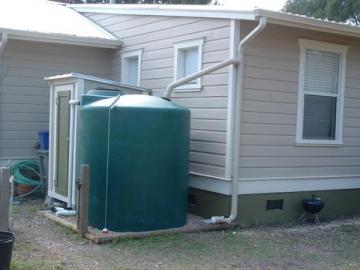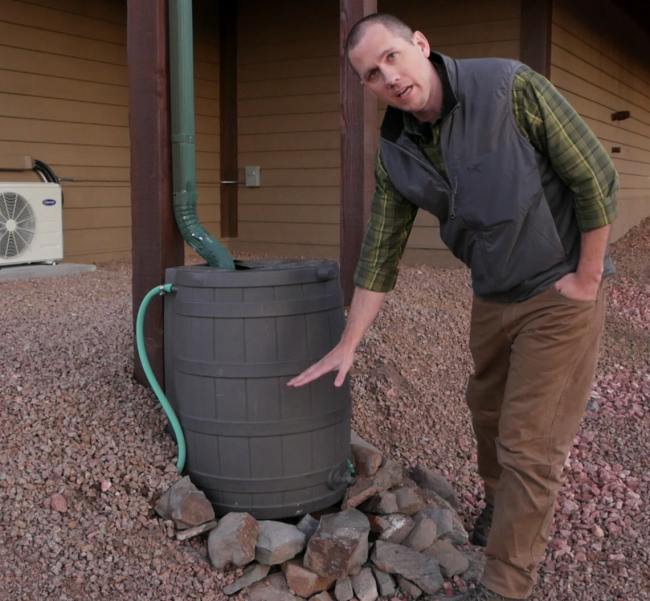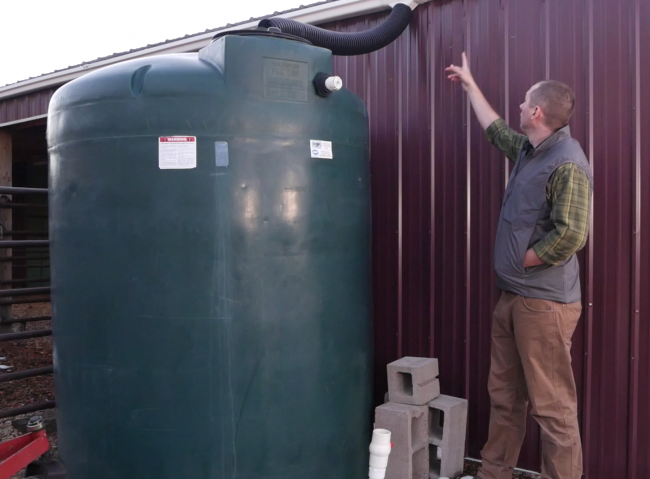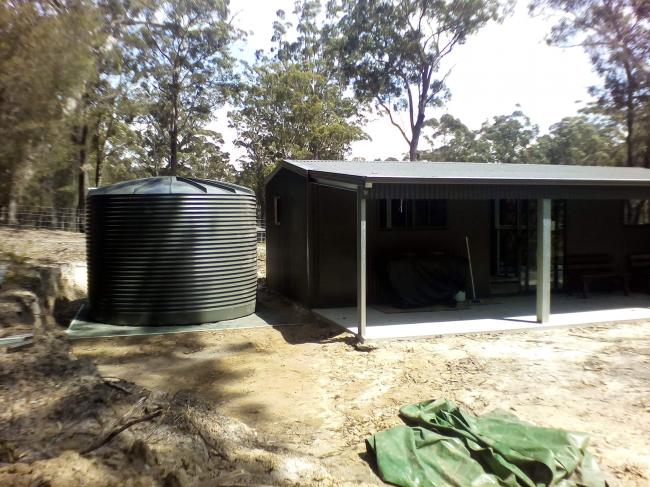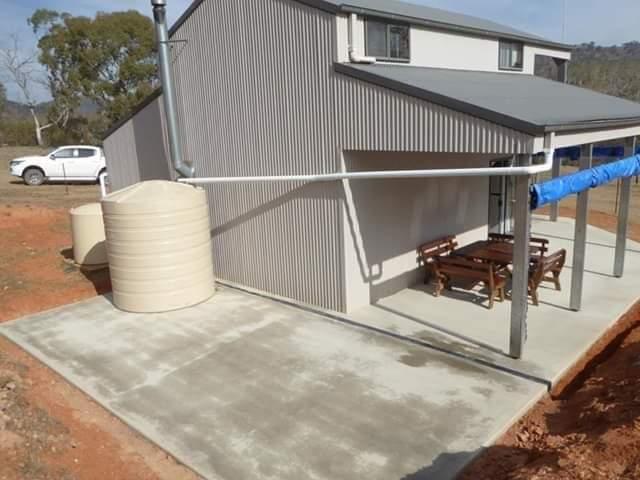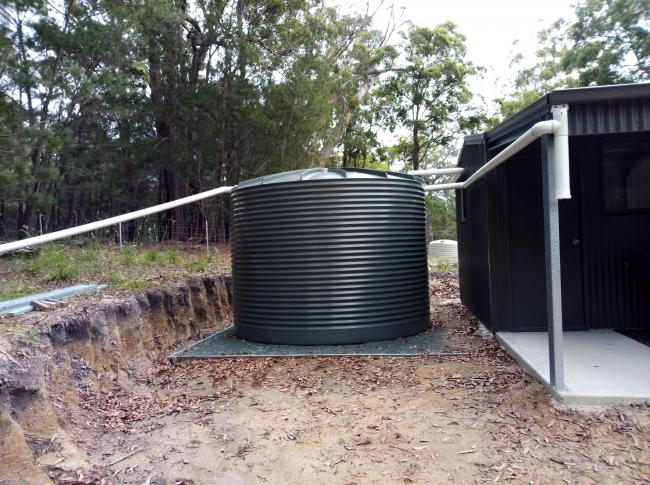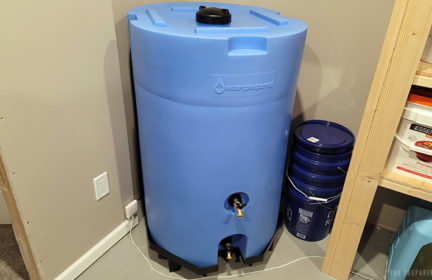Does anyone have a rain water harvest system?
(random rain collection system from Google)
I’m interested in collecting rain water as a backup source, but have many questions and don’t know where to start. I’ll probably leave this source to watering my garden, but want to be able to drink, cook, and bathe with it if needed in an emergency.
- Does anyone here collect rain water?
- Do you use your roof?
- How do you filter and prevent contaminates like bird droppings, insects, algae growth, and chemicals from the roof tiles?
I’d love to see pictures of yours if you do!
-
Comments (12)
-
matthew.Contributor - December 18, 2020
I installed some rain barrels in a house I lived in several years ago, and hope to do so this coming summer at my new home. I used a similar system as you have pictured (water collection from roof via gutters), but I used 55 gallon barrels (which worked great). I am no expert, but here are some quick thoughts:
- With this method, I am unaware of a way to collect pure, clean rain water free of contaminates. If you want to use this water for drinking you’ll have to filter and treat it.
- Depending on the climate you live in, you’ll be surprised how quickly the barrels fill up. You’ll want to include some sort of over-flow spout to allow water to escape once the barrel is full.
- Elevate your rain barrel for easier access to the water. Just like in an elevated water tower, gravity will be your friend when it’s time to water your lawn/garden with your collected water.
- Use an online calculator like this one to estimate how much water you can harvest from your roof: https://www.gardeners.com/how-to/rain-barrel-for-rainwater-collection/5497.html
- Also, I believe some states actually regulate homeowners’ ability to collect rain water, so check your local laws and such.
This video is a great starting point that walks you through the basics: https://youtu.be/ZKD3bqIItpE
-
Mike Hill - December 18, 2020
Thank you for your sharing your advice and knowledge matthew. I especially liked that YouTube video. It makes me realize how easy and simple I can make it. It’s not too scary to technical at all if I don’t want it to be.
I liked the big rain barrel she had in that video. It looks like a large opening that would help you gain access for some deep cleaning. (something that the traditional 55 gallon drums don’t have).
I also like your idea of elevating the barrels for easier access. The gravity and ability to put a bucket under would help out a ton!
-
John AdamaStaff - December 18, 2020
I was just now editing the rain catchment portion of our water course 🙂 Here’s some pics from the lesson:
The first picture is obviously a smaller barrel, almost like a wine cask. It integrates into a gutter downspout and holds a reservoir of water, with any extra flowing out. The larger one is just a big cistern connected to the gutter from a barn roof.
You always have some kind of fine mesh screen at the point where water enters the tank, which keeps out big debris, bugs, and critters.
-
Mike Hill - December 18, 2020
Thank you for the pictures and ideas. I am definitely going to have to look into that water course you linked to. I’m sure you guys will be going over water collection quite a bit, which is something I need want to improve in my family’s preps this year.
Do you know how many gallons those two containers are?
-
-
Jesse Smith - December 21, 2020
I don’t have much direct experience with potable back-up systems, but am hoping to work on an outbuilding project at my place in the new year, so it will be interesting to follow this thread.
For potable collection, Chris Maxwell-Gaines is a PE who has written quite a bit.
Here’s a really comprehensive article he wrote for JLC a while ago:
https://www.watercache.com/main/wp-content/uploads/residential-rainwater-collection-jlc-sept10.pdf
From what I can tell, he recommends diverting some initial quantity of rainfall to waste to clean the roof of debris/droppings. First-flush diversion is automated via a simple ball in a diverter. This puts a lot less material through a filtration system.
-
Mike Hill - December 23, 2020
Thank you for those links! I didn’t know how that diverting of the initial runoff would work, but the diagram on that link explained it. Pretty smart!
-
-
Dog lover - December 21, 2020
I’m in really good shape here with water luckily. We get loads of rain yearly and I have two creeks that flow across the property. I made several ponds with spillways on the smaller creek in the front. On top of that I am connected to county supplied water and have a deep drilled well. The reason I’m mentioning all this is I truly believe that water is the number one most important thing a prepper can consider. In one day without it a person is impaired. Three days and you’re in really dire straights. So, even with multiple water sources I recently set up a 16’ round above ground pool. It’s fun to swim in about four months a year, (I only like warm water), but I mostly did it for having another water source. I have just finished adding a porch on the end of my house and combined with the front porch the idea is to be able to direct the gutters into the pool. That will give me 60’ of metal roof line to keep the pool full. As far as contaminates getting into the water from either the pool or other sources I have multiple ways to filter. My favorite is the big berkey. They are gravity fed and handle large volumes of water with renewable filters lasting for years.
-
Mike Hill - December 23, 2020
You do have quite the water setup! Thank you for sharing.
-
-
Downunder - December 23, 2020
Both my retreats have rain water collection into large poly tanks. All tanks here in Aus come fitted with a steel mesh screen where the inlet pipe rests, and a steel mesh cover over the overflow outlet to prevent mosquito, frogs etc from getting access. Our taps are normally an inch or two above the bottom of the tank, so any sediment rests at the bottom of the tank below the outlet. At one retreat I enclosed all roof guttering with a stainless steel leafguard to prevent leaves entering the inlet pipes via the gutter. Some people use a first flush diverter. It is important to ensure the overflow pipe isn’t overwhelmed by the inlet pipe. For instance, two 90mm inlet pipes and one 90mm overflow pipe isn’t recommended, but hasn’t been a problem for me.
-
Mike Hill - December 23, 2020
Those look amazing! I’ll definitely need to look into one of those in the future.
Do you ever have to clean them out for algae? You said that the spouts are two inches from the bottom so that the sediment will settle at the bottom, is there a way to clean that out if it builds up?
-
Downunder - January 7, 2021
Sorry for the delay in reply, missed your comment. We don’t really get algae because very little sunlight penetrates the tank. Tanks can be drained and cleaned but it’s dangerous. Not sure why, there must be a build up of some sort of dangerous gas. They last many years without cleaning.
Here’s a better photo of one of my tanks:
-
Mike Hill - January 8, 2021
Thanks for the response! I hope I can get a large water container like that someday.
Have a wonderful day!
-
-
- News for the week of 2025-07-14 - 1 day ago
- News for the week of 2025-07-07 - 1 week ago
- Fun ways to teach kids outdoor/survival skills - 2 weeks ago
- News for the week of 2025-06-30 - 2 weeks ago
- News for the week of 2025-06-23 - 3 weeks ago
This forum is heavily moderated to keep things valuable to as many people as possible. Full community policies are here. The basics:
- 1. Be nice to each other.
- 2. Stay focused on prepping.
- 3. Avoid politics, religion, and other arguments.
- 4. No unfounded conspiracies, fake news, etc.
- 5. Debate ideas, not people.
